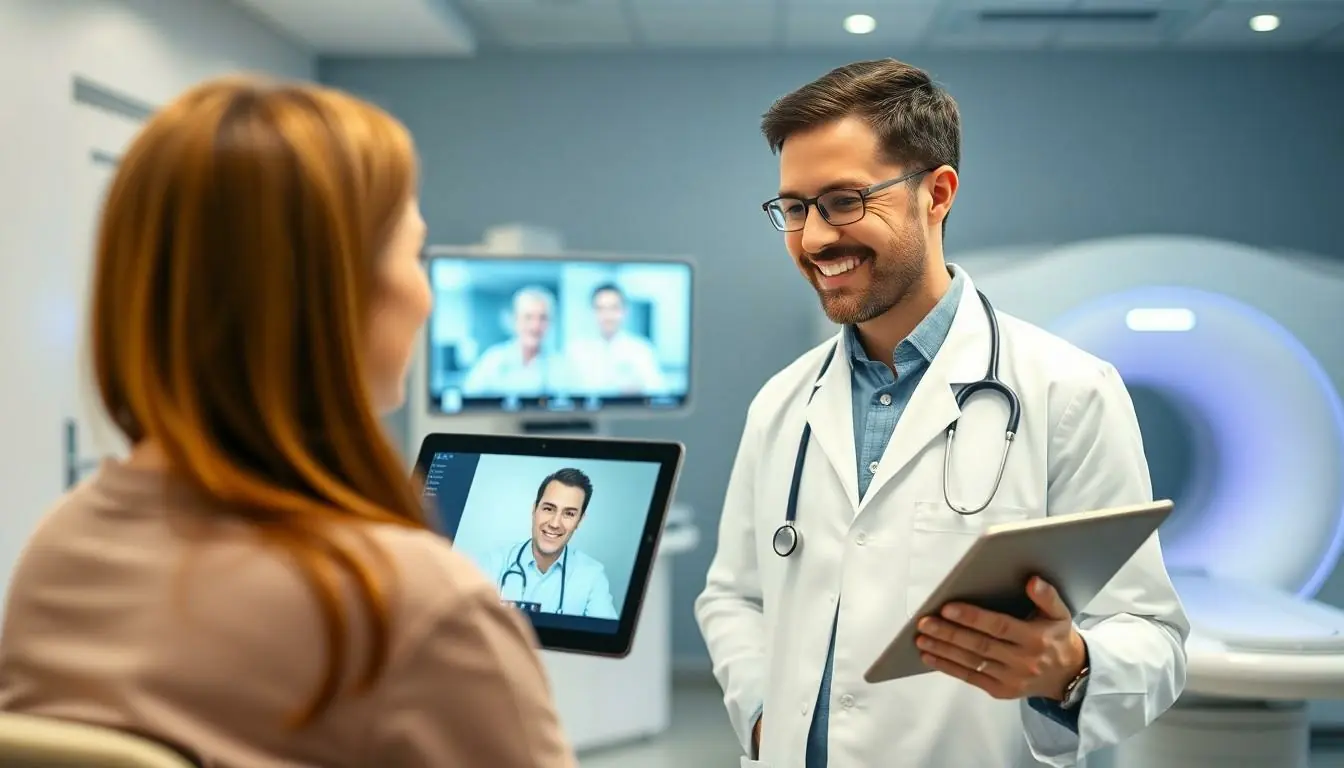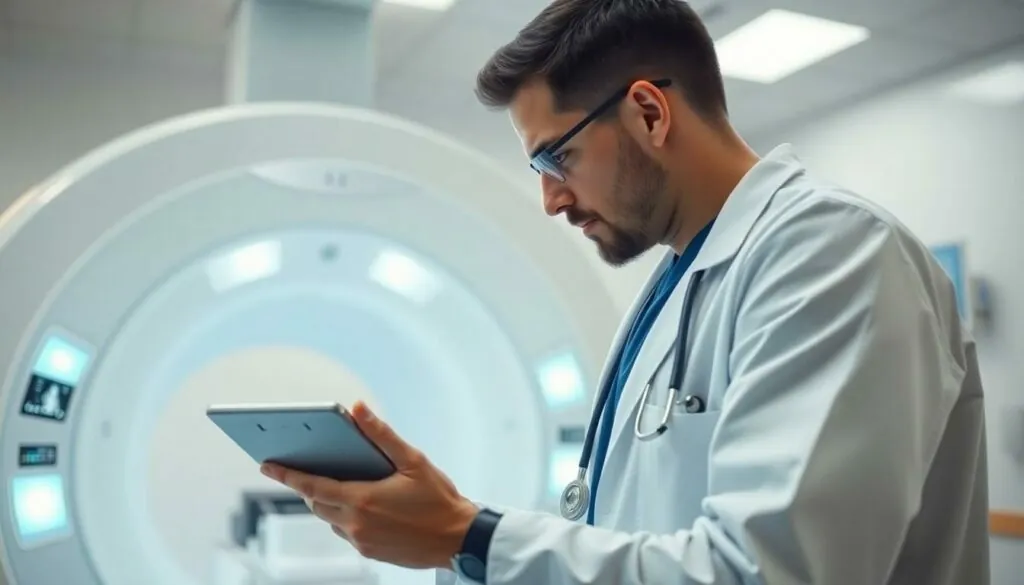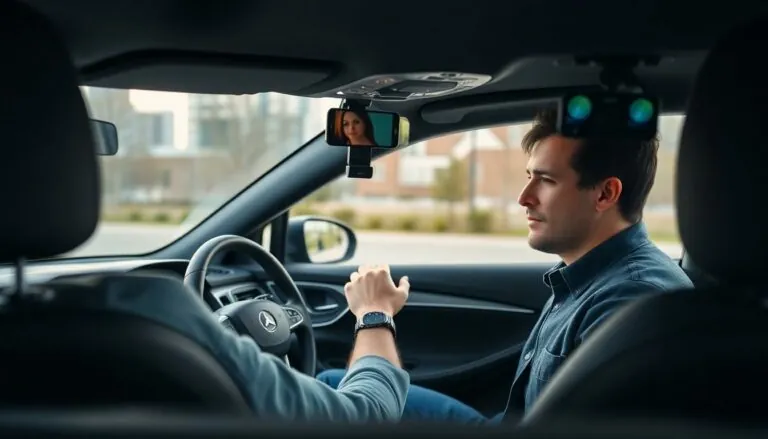Table of Contents
ToggleWhen you think of space travel, images of astronauts floating in zero gravity or dodging asteroids might come to mind. But what if we told you that some of the coolest medical inventions were born from the same tech that sent humans to the moon? That’s right—while NASA was busy launching rockets, they were also inadvertently launching life-saving innovations right here on Earth.
From advanced imaging techniques to life-saving devices, the crossover between space technology and healthcare is more profound than you’d think. So buckle up as we explore how these stellar inventions have transformed medicine, proving that sometimes, reaching for the stars brings us closer to saving lives. Who knew that the next time you see a doctor, they might just be channeling their inner astronaut?
Overview of Space Technology Impact
Space technology has profoundly influenced medical advancements. Initially designed to support astronauts, technologies developed by NASA have been repurposed for healthcare settings. Advanced imaging techniques, such as MRI and CT scans, originated from space exploration needs. These innovations enable doctors to diagnose diseases with greater precision.
Moreover, telemedicine emerged from the necessity to provide medical support to astronauts in isolated environments. This technology allows patients to connect with healthcare providers from remote locations, enhancing accessibility. Remote monitoring devices also evolved from tools used in space missions, enabling continuous patient health tracking.
Additionally, materials developed for space missions have led to breakthroughs in wound care. Dressings made from aerospace materials improve healing processes, reducing recovery times. Heart pumps, originally crafted for space travel, are now pivotal in modern surgeries, saving countless lives.
Biomedical research conducted in microgravity has opened new avenues in clinical studies. It provides unique conditions that lead to discoveries not possible on Earth. Thus, space technology is not just about exploration; it fundamentally reshapes medical practices, emphasizing the intertwined nature of these fields.
Each medical invention inspired by space travel underscores the importance of innovation. By investing in technologies for space exploration, significant advancements in medicine continue to emerge, directly impacting patient care and treatment.
Key Medical Inventions

Technological advancements from space travel have significantly influenced medical inventions. These innovations enhance patient care and treatment outcomes.
Telemedicine
Telemedicine emerged from the necessity to provide healthcare in remote settings. Originally, NASA developed this technology to support astronauts during missions. Now, patients can consult with healthcare providers through video calls or messaging systems. Accessing medical advice becomes easier, particularly for those living in underserved areas. Real-time consultations improve diagnosis and treatment efficiency. Data supports that telemedicine has increased patient satisfaction and reduced travel time for appointments. Consequently, this invention revolutionizes how individuals interact with doctors.
Advanced Imaging Techniques
NASA’s quest for precise monitoring of astronauts paved the way for advanced imaging techniques. Innovations such as MRI and CT scans have transformed medical diagnostics. Healthcare providers utilize these technologies for early disease detection and detailed internal examinations. The ability to visualize structures within the body enhances treatment planning. Studies show that these imaging techniques lead to improved accuracy in assessing conditions like tumors and injuries. New imaging methods continue to evolve, integrating artificial intelligence for better analysis. Advanced imaging remains crucial for modern medicine, demonstrating the lasting impact of space technology.
Wearable Health Monitors
Wearable health monitors emerged from technology initially developed for space missions. These devices track vital signs such as heart rate, respiratory rate, and activity level. NASA’s need for astronaut health monitoring led to innovations that now empower individuals to manage their health better.
Sensors built for space research paved the way for devices like fitness trackers and smartwatches. These technologies allow users to collect real-time data, promoting awareness of personal health metrics. Users can respond promptly to irregularities, potentially preventing severe health issues.
Telemedicine enhances the utility of wearable devices. Remote monitoring capabilities enable healthcare providers to assess patients’ health from afar. Patients benefit from regular check-ins and continuous monitoring, especially in rural or underserved areas.
Studies show that wearables improve patient engagement and adherence to treatment plans. Data gathered can guide lifestyle changes and inform medical decisions. Doctors access detailed health information, leading to personalized care strategies that address individual needs.
In addition, these devices contribute to research in patient behavior and health outcomes. Data analytics provide insights into trends and patterns that inform public health strategies. Over time, the amalgamation of space technology and medical wearables has fostered a proactive approach to healthcare, significantly transforming patient experiences.
Drug Development and Delivery Systems
NASA’s focus on space health has driven remarkable innovations in drug development and delivery systems. Technologies initially created to administer medication to astronauts have been adapted for use in hospitals and clinics, improving efficacy and patient outcomes.
Pressure-activated syringes can deliver medication with precision, minimizing waste and ensuring accurate dosages. These devices reduce the risk of contamination, fostering safer administration practices.
Furthermore, drug delivery systems developed for space have paved the way for advanced forms of medication, such as hydrogels and nano-carriers. These materials enhance the absorption of drugs, ensuring that patients receive optimal therapeutic effects.
Systems that transport medications in microgravity environments have also inspired the design of new, efficient drug delivery devices on Earth. Innovations in micropumps provide precise control, helping healthcare professionals tailor treatments to individual needs.
Biomedical advancements, including aerosolized drug delivery, mirror technologies initially designed for space missions. This method allows for targeted therapy, particularly for respiratory conditions, improving patient compliance and treatment effectiveness.
Research continues to explore the potential of utilizing space-derived technologies for vaccine delivery. Enhancements in storage, transport, and administration techniques ensure that vaccines maintain their efficacy, especially in resource-limited settings.
Transformative strides in drug development and delivery systems underscore the profound impact of space technology on healthcare. Each advancement contributes to more effective treatments, enhancing patients’ quality of life and advancing medical practices.
Limitations and Challenges
Space-derived medical technologies encounter several limitations and challenges during their adaptation for healthcare. Resources sometimes fall short when transitioning advanced space systems into clinical applications. Funding and cost barriers often hinder the development of new technologies, impacting their accessibility in medical settings.
Complexity arises in the integration of sophisticated systems, making training for healthcare professionals essential. Education and familiarity with these technologies can pose challenges, particularly in rural or underserved areas. Compliance with stringent regulatory standards influences how swiftly innovations reach the market.
Furthermore, some technologies require extensive adaptation to meet specific healthcare needs. Unique considerations in human physiology and disease management necessitate tailoring the original designs, potentially delaying implementation. While innovations like wearable health monitors have transformed patient care, disparities in technology access and usage persist, affecting overall health outcomes.
Additionally, the reliability of space-derived technologies in diverse environments must be tested rigorously. Variability in patient populations and medical conditions can impact the performance of these technologies, necessitating further research. Balancing the costs and benefits of these advanced solutions remains vital for healthcare systems striving for effective integration.
As the landscape of medical technology evolves, ongoing collaboration between space agencies and healthcare organizations proves crucial. Innovations birthed from space exploration promise significant advancements, yet overcoming limitations will define their success in improving patient care.
The intersection of space travel and medical innovation reveals a remarkable journey of technology that transcends its original purpose. As advancements developed for astronauts find their way into everyday healthcare, they demonstrate the profound impact of exploration on human well-being. From advanced imaging techniques to wearable health monitors, these innovations not only enhance diagnosis and treatment but also empower individuals to take charge of their health.
While challenges remain in adapting these technologies for widespread use, the ongoing collaboration between space agencies and healthcare organizations holds promise for future breakthroughs. The legacy of space exploration continues to shape the medical landscape, ultimately leading to improved patient care and enhanced quality of life.




